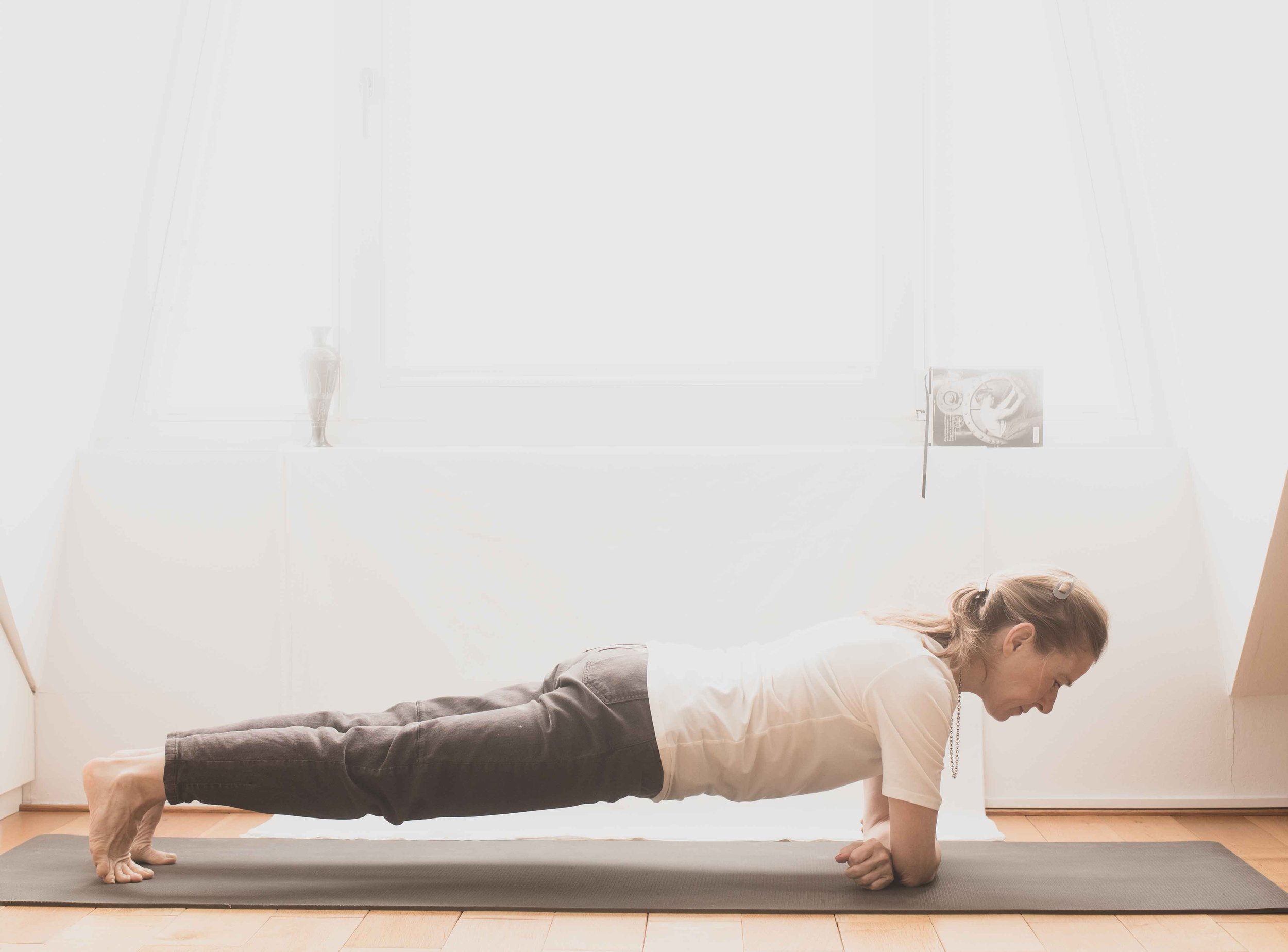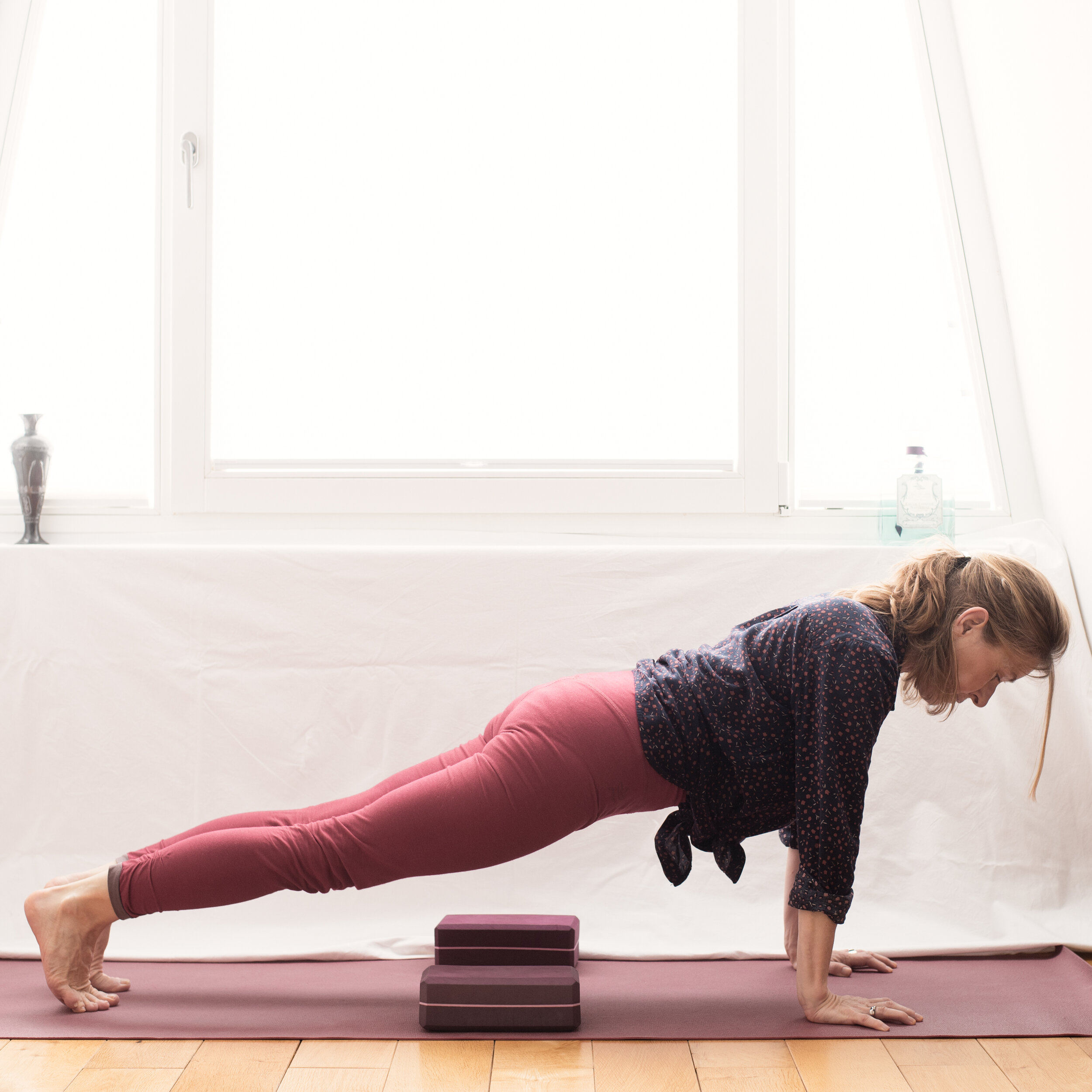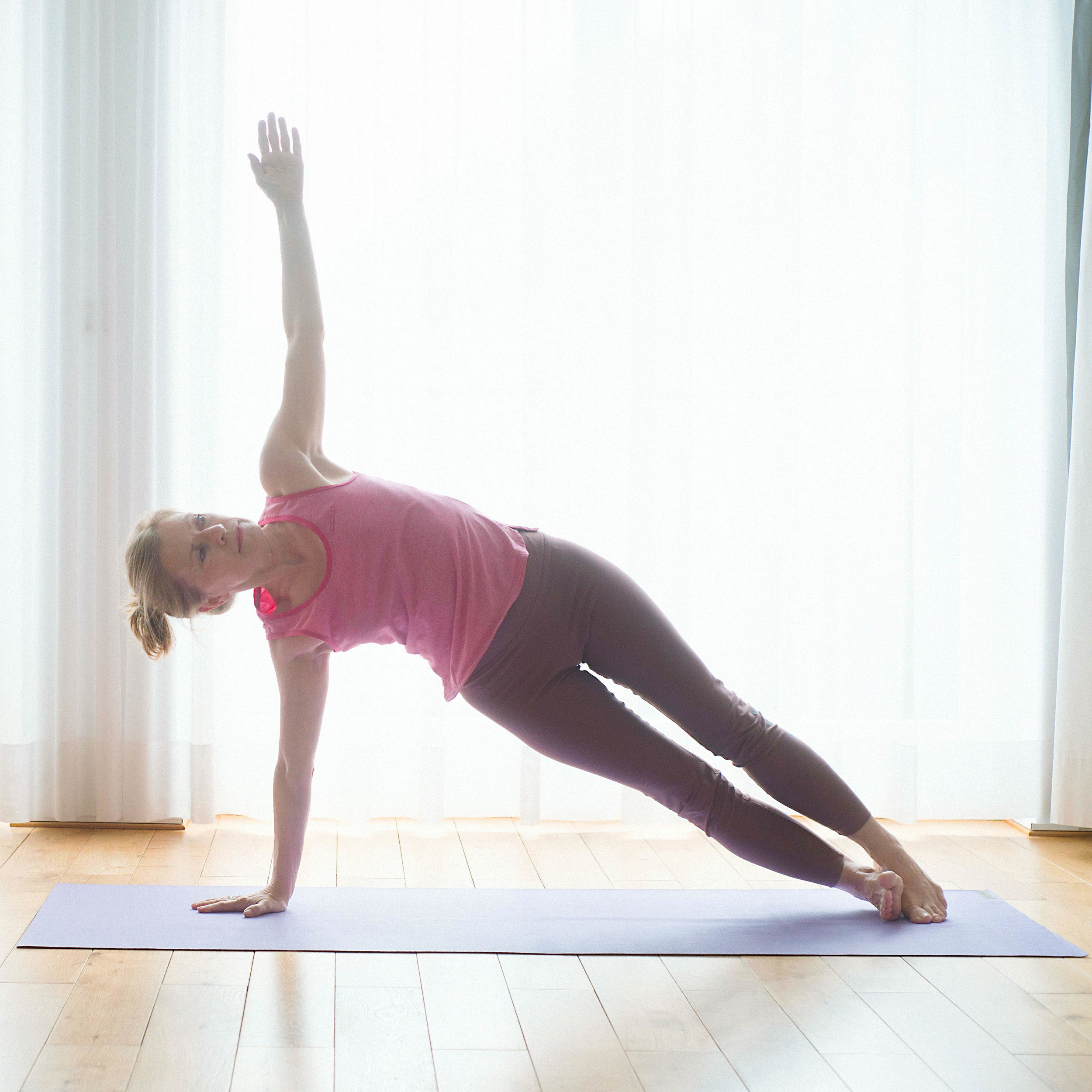Planks as a strength exercise
In my first blog post about planks, I described how to get into a classic incline. Ideally, the shoulders should be above the wrists. This way your arms are parallel to the wall. The wrists are not overloaded. The body is a straight inclined plank. Leg and especially the abdominal muscles are tensed.
There are many variations of this basic pose.
I got the ideas from Sean Vigue's book 'Thirty days of Planks'.
It is important to perform the positions correctly. You should also hold the postures for at least ten breaths. That's what Sean recommends. I tend to use a timer and set it to one minute.
The link is an affiliate link to Amazon. I earn a small commission with it.
The next variation is the side planks. Sean places his top foot on the floor. This makes it easier to balance. But you don't have to do this. For me, this pose is a preparation for Vasishasana, the first pose in the 3rd Ashtanga yoga series. I don't want to make the balance any easier for myself, especially as it's easy for me to do the pose when my feet are on top of each other.
It is easier to balance with indoor shoes. The pose was also recommended to me by the personal trainer at the gym.
It is important not to let the hips sink. The body should be parallel. It feels as if the hips have to be pushed forward.
Dristhi is the hand that stretches upwards.
This exercise can also be easily integrated into any Ashtanga yoga series.
The exercise is easier if you support yourself on your forearm.
This is followed by a dynamic variation of the plank pose. The right and left knee are alternately brought to the floor. The body remains straight. This is also an easy balancing exercise. The abdominal muscles remain tensed. Twenty repetitions are suggested. The outstretched leg presses backwards.
The exercises look simple, but they're really tough.
The left and right leg are alternately stretched upwards. The hips remain parallel or pull towards the floor. This exercise strengthens the gluteus muscle. It also stretches the hip flexor. This is another dynamic exercise that should be repeated up to 20 times.
These six plank variations will keep you busy for a good week. As with everything, daily practice is important. Next week I will introduce the next variations from Sean Vigue's book.
Let's be strong.
Core strength - plank pose
Chaturanga dandasana, March 2021
Plank pose: The body is supposed to be straight.
From plank pose one can exercise a lot of variations. They have all the purpose to make the body stronger. One can lift one arm or one leg or the right arm and the lift leg and so on. To stay in that position for one minute can be challenging as well.
It’s a great arm exercise when lowering slowly.
Important is to engage the entire body.
One can shift the weight of the body from one hand to the other.
I like that it’s easy to integrate some variations of this position when doing the sun salutations.
The core and the back must be seen together. Shalabhasana gives the opportunity to work on back strength.
All core strength exercises are preparations for the jumping back and forward vinyasa.
My experience is that it’s better to exercise a few core strength exercises that one can integrate in a practice than to aim for another strength practice. Repetition is a key here. Repeat the poses and movements that you like. After a while one can alter the exercises.
Keep practicing.
Plank pose
Plank pose is more challenging than it looks, especially if one wants to hold the pose longer. One could aim for a minute and three sets. It’s also recommended to move forward and backward. I can imagine to integrate this asana in my daily practice. It builds strength in the shoulders. My upper arms could be a bit more parallel to the wall, but it’s also OK as it is. My body is straight, which is good. The poses feel differently than they look. Pictures help to adjust the asanas.
It’s easier to keep the body straight when the neck is in line with the body. I prefer looking to the floor than to the wall. These days I also keep my neck in line with the body when I do chaturanga dandasana, which is part of sun salutation. Some people have flexible necks, I don’t have a flexible neck. It’s a very sensitive part of the body. There is pressure on the neck when moving the head backwards. It’s more likely that the back arches when the head moves backwards. This is why I prefer the above version.
Plank pose is supposed to prepare pincha mayurasana. I can imagine this, because it strengthens the shoulders.
One pose leads to the next. All sorts of asanas have easier versions and more demanding versions.
So glad that I practiced and explored new poses. After 90 minutes I was exhausted. Within 90 minutes one can do a lot. If one focuses on the 80 % relevant activities, if one doesn’t avoid the challenging parts, I’m sure progress comes fast. It’s great if one can enjoy an asana. This is the final goal. An asana is mastered when it feels good.










